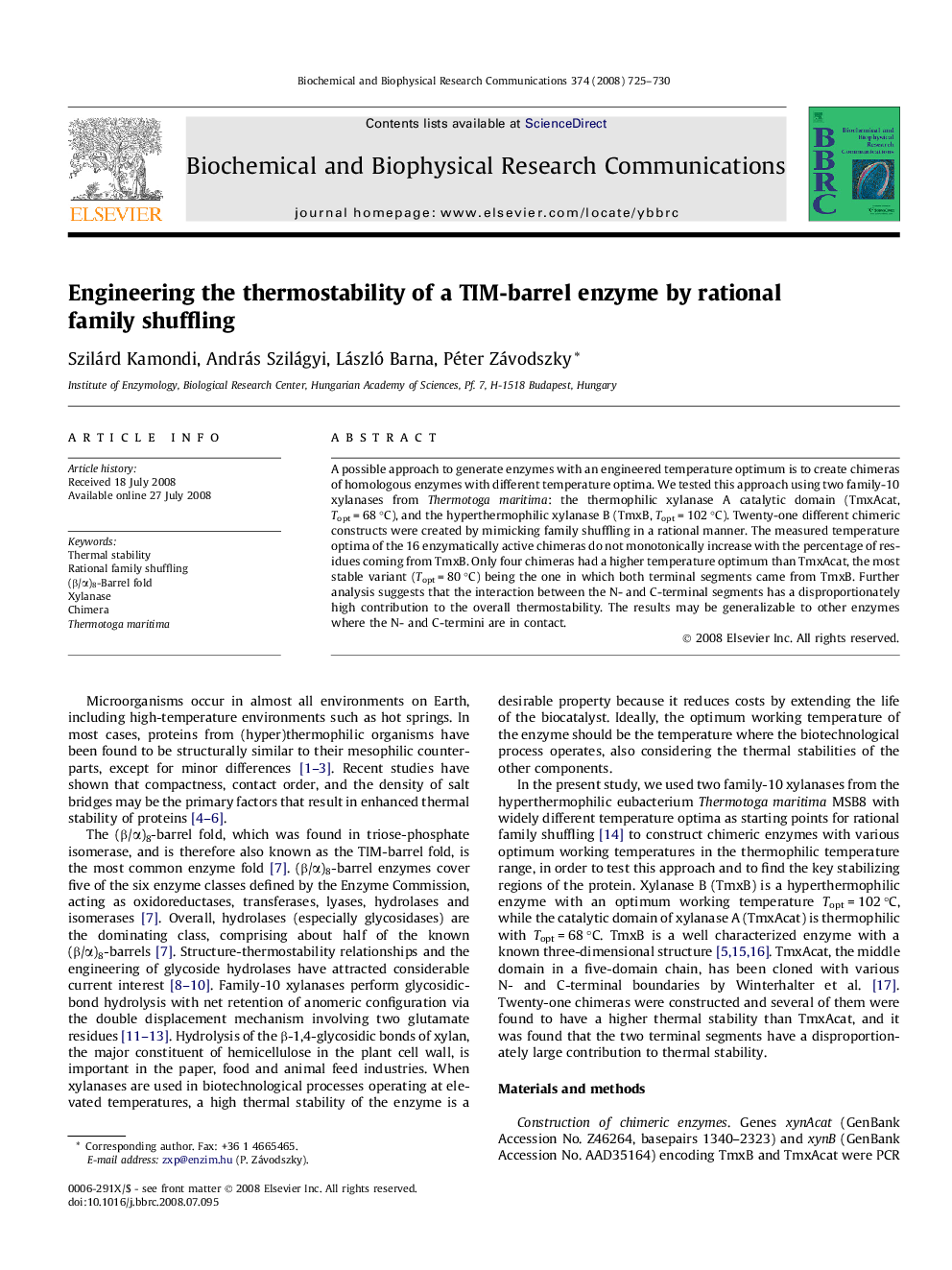| Article ID | Journal | Published Year | Pages | File Type |
|---|---|---|---|---|
| 1935034 | Biochemical and Biophysical Research Communications | 2008 | 6 Pages |
A possible approach to generate enzymes with an engineered temperature optimum is to create chimeras of homologous enzymes with different temperature optima. We tested this approach using two family-10 xylanases from Thermotoga maritima: the thermophilic xylanase A catalytic domain (TmxAcat, Topt = 68 °C), and the hyperthermophilic xylanase B (TmxB, Topt = 102 °C). Twenty-one different chimeric constructs were created by mimicking family shuffling in a rational manner. The measured temperature optima of the 16 enzymatically active chimeras do not monotonically increase with the percentage of residues coming from TmxB. Only four chimeras had a higher temperature optimum than TmxAcat, the most stable variant (Topt = 80 °C) being the one in which both terminal segments came from TmxB. Further analysis suggests that the interaction between the N- and C-terminal segments has a disproportionately high contribution to the overall thermostability. The results may be generalizable to other enzymes where the N- and C-termini are in contact.
